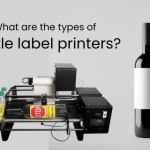Green securitization presents an exciting new opportunity to invest in sustainability. As one of the fastest-growing areas within sustainable finance, this innovative financial instrument has already helped to channel billions of euros into renewable energy projects over the past year alone. With its ability to unlock vast capital resources and bring opportunities for much wider investor participation, green securitization is set to become a major driver for sustainable investments going forward. In this blog post, we will explore why green securitization is emerging as a leading financing tool for those seeking long-term environmental and social returns from their investment portfolios.
- Introducing Green Securitisation and its Benefits
- Examining the Different Types of Green Securitisation Products
- Looking into Green Energy Securitisation
- Understanding the Regulatory Framework for Green Investing
- Exploring the Risks of Investing in Green Securitisation
- Looking at Market Trends for Green Securitisation and Sustainable Investing

Introducing Green Securitisation and its Benefits
Green Securitisation is a financing mechanism that has the potential to bring about significant positive changes in the environment. Unlike traditional financing models, this innovative approach aims to channel funds towards environmentally friendly projects by connecting them with green investments. The benefits of green securitization are many, including the potential to address climate change and promote sustainable growth. Investors are increasingly looking for ways to make investments with a positive impact, and green bonds are just the beginning. With green securitization, investors have the flexibility to choose how they want to invest in environmentally responsible projects, while also enjoying robust returns. Furthermore, this mechanism can help companies to achieve their sustainability targets and demonstrate their commitment to the environment by promoting transparency and accountability. As the importance of addressing climate change becomes increasingly clear, green securitization has emerged as a powerful tool to channel financial support towards projects that can make a real difference in creating a sustainable future.
Examining the Different Types of Green Securitisation Products
Green securitization products are becoming an increasingly popular way for companies and investors to contribute to environmental sustainability. These financial instruments are designed to support environmental initiatives and projects, such as renewable energy production or carbon reduction. There are a variety of different types of green securitization products available, including asset-backed securities, collateralized debt obligations, and mortgage-backed securities. Each type of product has its own unique characteristics and benefits and can be tailored to meet the specific needs and goals of individual investors. As the demand for sustainable investments continues to grow, green securitization products are expected to play an increasingly important role in the global economy.
Looking into Green Energy Securitisation
Green energy is the future of our planet, and it’s imperative that we find ways to invest in renewable energy sources. One such method gaining popularity is green energy securitisation which is an up and coming trend. This financial tool allows investors to invest in a portfolio of renewable energy assets, such as wind and solar farms. Green energy securitization can benefit the project owners, investors, and the environment, as it provides a way to finance green projects while generating income at the same time. This innovative approach to investing in green energy is a positive step in the right direction in the fight against climate change.
Understanding the Regulatory Framework for Green Investing
Green investing has become an increasingly popular option for those looking to make a positive impact on the environment, while also potentially seeing financial returns. However, navigating the regulatory framework around such investments can be a daunting task. Understanding the various regulations and guidelines that govern green investing can be crucial in making informed investment decisions. From environmental and social governance criteria to disclosure requirements, investors must be well-informed to ensure they are making ethical and sustainable choices. By understanding the regulatory framework for green investing, investors can not only make a positive environmental impact but also reap the rewards of a more sustainable financial future.
Exploring the Risks of Investing in Green Securitisation
As more and more investors consider environmentally-friendly options, green securitization has emerged as a promising investment avenue. However, like any investment, there are risks that investors must be aware of before jumping in. One potential risk is the lack of consensus on what constitutes a “green” investment. Without clear guidelines and standards, companies may make misleading claims about the environmental impact of their securitized assets. Additionally, the increasing popularity of green securitization could lead to a market bubble, driving prices up to unsustainable levels. While investing in environmentally-friendly options is important, it’s crucial that investors do their due diligence and carefully consider the potential risks involved.
Looking at Market Trends for Green Securitisation and Sustainable Investing
As the world becomes increasingly aware of the pressing need for sustainability, the financial sector is taking note. In recent years, green securitization and sustainable investing have emerged as exciting trends in the field. Green securitization involves packaging sustainable assets — such as energy-efficient buildings or renewable energy projects — into securities that can be bought and sold in financial markets. On the other hand, sustainable investing involves investing in companies that promote environmentally and socially responsible practices. Both trends demonstrate a growing interest in environmental and social factors among investors and financial institutions. As we move towards a more sustainable future, it will be interesting to monitor how these trends develop and shape the financial industry.

In conclusion, green securitization represents an exciting new investment opportunity for those who are looking to get into sustainable investing. Benefiting from the unique abilities of traditional asset-backed securities, these efficient and innovative products offer investors a range of potential returns that could lead to substantial growth. The market for green securitizations is rapidly growing and this form of investing is expected to become much more popular in the coming years. However, it is important for investors to be aware of the inherent risks associated with green securitizations and ensure they understand the relevant regulatory framework before making any investments. By having a better understanding of the various types of green securities available, as well as keeping abreast of current market trends, investors will be better equipped to make informed decisions when it comes to investing in green securitizations.














